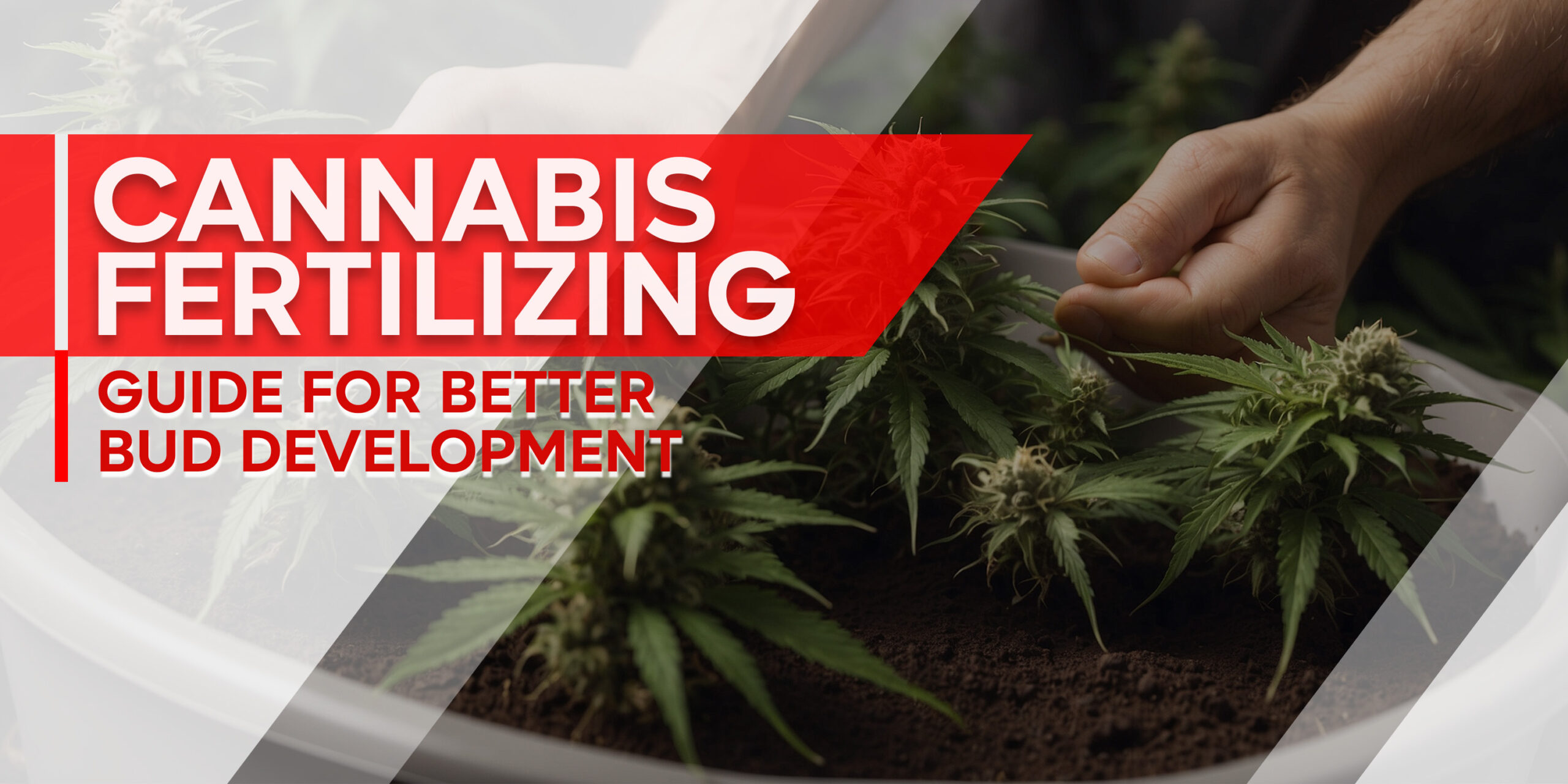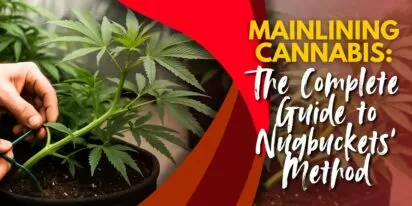Reaching large and quality cannabis buds calls for a measured fertilization process relevant to every phase of the plant life. Providing cannabis plants the right nutrients needed for good development, strong bud creation, and quality harvests depends much on fertilizers. By applying efficient marijuana fertilizers guide theory and practice, cannabis growers can produce larger, better quality buds than in all phases of development.
Understanding the Phases of Cannabis Growth and Nutritional Requirements
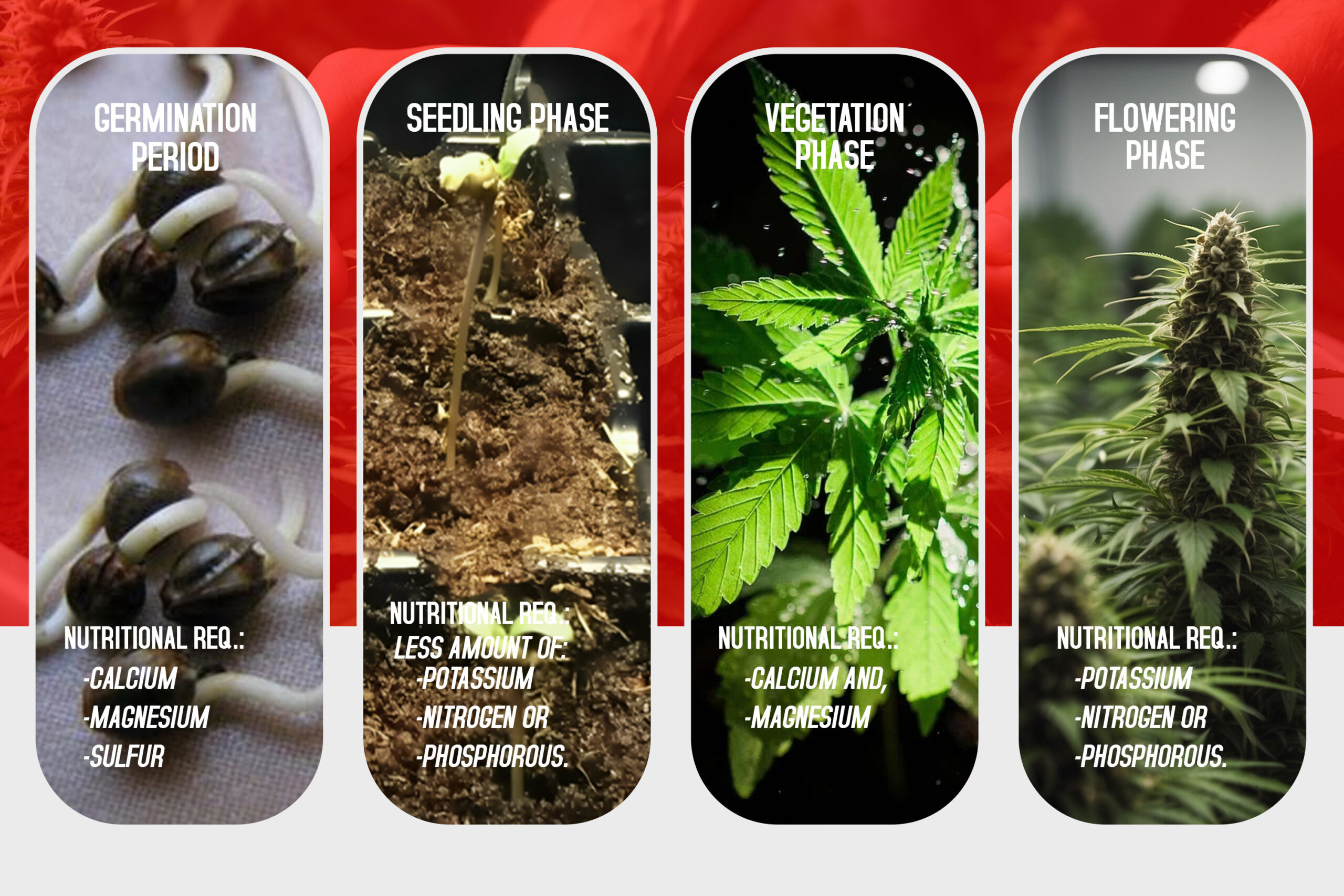
Each of the numerous growth cycles that cannabis plants follow depends on particular nutrients. Delivering the right cannabis nutrients at the right moment depends much on complete awareness of the phases of growth. The four primary growth phases of cannabis are germination, seedling, vegetative, and flowering; each has particular difficulties; yet, plants can grow to their best potential when nutrients are tailored to fit each stage of development.
Germination Period
A cannabis seed moves into the germination stage when it absorbs water and develops leaves. At this stage, the plant is mostly developing roots and starting to create leaves, hence it requires few nutrition. The first few days following germination require no nutrients since the internal energy kept in the seed will be enough to drive first development. To preserve early development, the root system can, however, enjoy a weak, balanced nutrition solution once it starts growing.
Although most nutrient-rich fertilizers are not needed right now, early root development and healthy cellular structure can be promoted with the help of trace minerals such calcium, magnesium, and sulfur. It is advisable to create a diluted solution of water-soluble nutrients to ensure that the soil is not over-enriched as this can harm the fragile young roots. To promote successful seedling emergence, it is also crucial to offer the correct climatic conditions for germination: heat, humidity, and air movement.
Phase of Seedlings
The seedling stage starts as soon as the seedling breaks out of the ground and starts to grow its first set of actual leaves. At this moment the plant is still delicate and susceptible to too many nutrients; so, one should only offer minimal amounts of nutrients. Young seedlings are mostly concerned in building their early structure and root system. Right now, they do not call for strong amounts of potassium, nitrogen, or phosphorous.
Usually cannabis seedlings nutrients need less in nitrogen, a dilute fertilizer solution performs best currently. Such a solution will provide the plant only the nutrients it needs to grow without overloading it. Rich in vitamins and growth hormones, organic fertilizers or liquid seaweed extracts can stimulate root development without overfeeding. Giving indirect light and carefully watering it will benefit seedlings at this crucial period.
Vegetative Stage
Most of cannabis plant growth occurs in the vegetative stage. Cannabis plants grow the structure required for strong flowering during this period: stems, branches, and leaves. The plants need more nitrogen since it is essential for the synthesis of chlorophyll and leaf condition to sustain this surge of development. Nitrogen encourages foliage development, which then helps photosynthesis and energy generation.
Apart from nitrogen, phosphorous, and potassium, the vegetative phase requires these elements, but less than when a plant is in bloom. Phosphorus promotes a good development of roots and flowers; potassium assists the plant tothe good development of roots and flowers; potassium helps the plant be healthy generally and prevents diseases. The plant has to have enough calcium and magnesium throughout vegetative development to keep strong cellular walls and avoid shortage.
Flowering Period
The last stage of development, the blooming period is when cannabis plants start to blossom. When nutrients are involved, this is the most important phase since it requires a very exact concentration of nitrogen, potassium, and phosphorous to be provided to start producing healthy flowers and gain bigger buds. Here nitrogen may be lowered as, if too high levels of it are introduced, the plant may eventually cause more leaf development.
Phosphorus is rather crucial throughout the blossoming period. It is the one in charge of producing energy and accelerating the growth of blooms with more solid form. In terpenes and cannabis development, which define taste, scent, and strength in the end product, it is also vital. Potassium is also crucial since it regulates the water flow in the plant and overall hardening of cellular structure, so denser and harder the buds are.
Natural vs Synthetic fertilizers
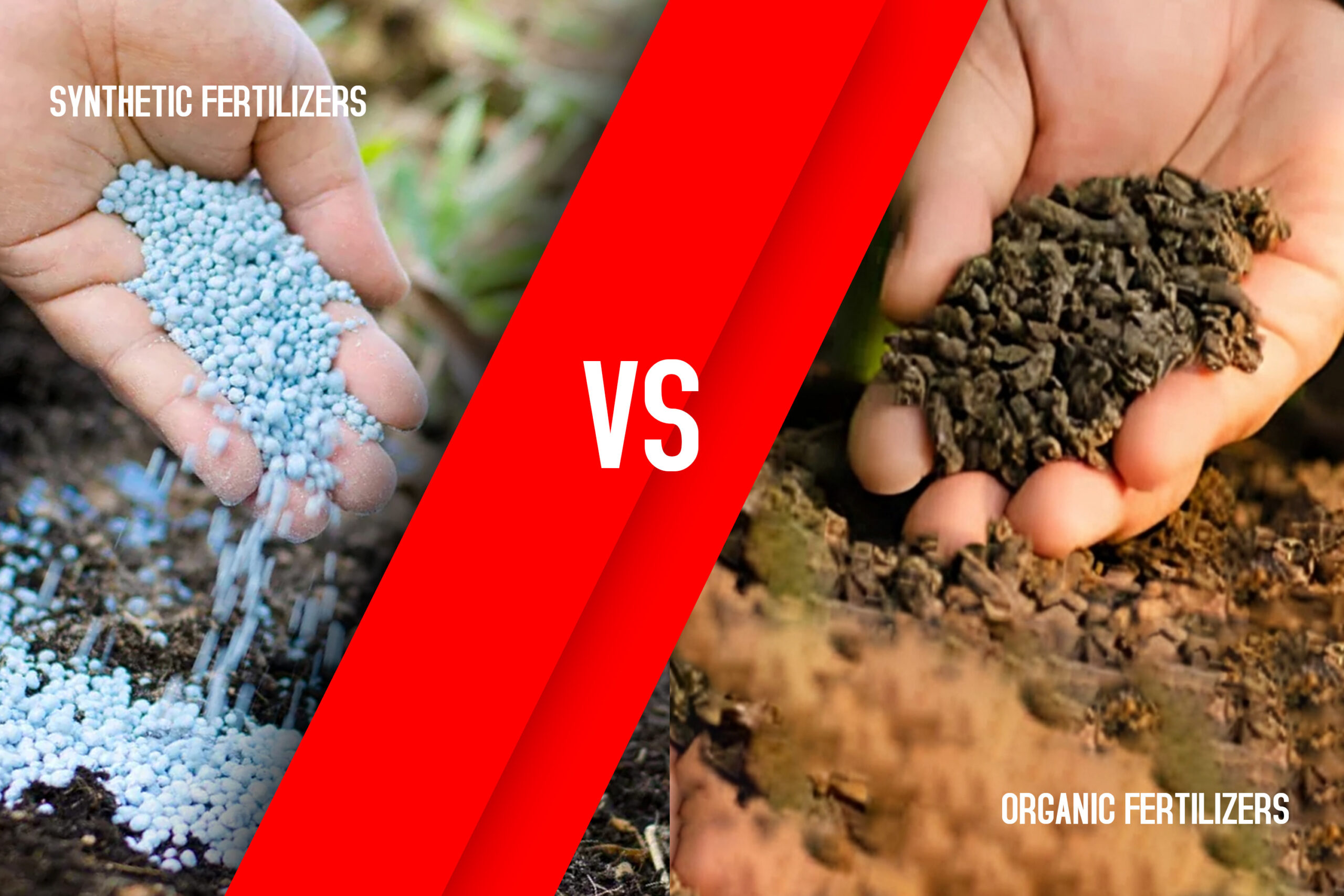
For cannabis growers, organic and synthetic fertilization techniques are major factors of thought. Both techniques have different advantages and disadvantages; the best one will rely on a number of elements, including the objectives of the grower, climate inclination, and plant needs.
Organic fertilizers
Natural materials include compost, manure, and fish emulsion make up organic fertilizers. These release nutrients slowly that over time improve soil structure and condition. Organic fertilizers have the best benefit in increasing microbial activity in the soil, so enhancing the conditions for roots. Furthermore more environmentally beneficial are organic fertilizers since they are less prone to leech dangerous chemicals into nearby water or soil.
Most organic fertilizers also help the cannabis buds to have terpenic flavors and smells. For example, large quantities of helpful bacteria found in compost and worm castings increase the terpene complexity of cannabis, the component responsible for its unique scents and sensations. For those who want natural, full-flavored products, such nutrients make organic cannabis more appealing.
Fertilizers Synthetic
Still, synthetic fertilizers are produced chemically to provide plants exactly accessible nutrients. More nitrogen, phosphorous, and potassium abound in these fertilizers, which also have faster nutrient absorption power. When plants suddenly lack nutrients or need quick correction to alleviate environmental stress, they operate best.
Synthetic fertilizers for weed have the benefit in their predictable and under control ability for supplying nutrients. Farmers can regulate the nutrients especially in line with the demands of the plant at any given moment. Synthetic fertilizers, on the other hand, often build up in the soil and, if improperly maintained, cause harmful concentrations of some nutrients detrimental to the plants or the surroundings.
Beneficial Microorganisms: Their Function
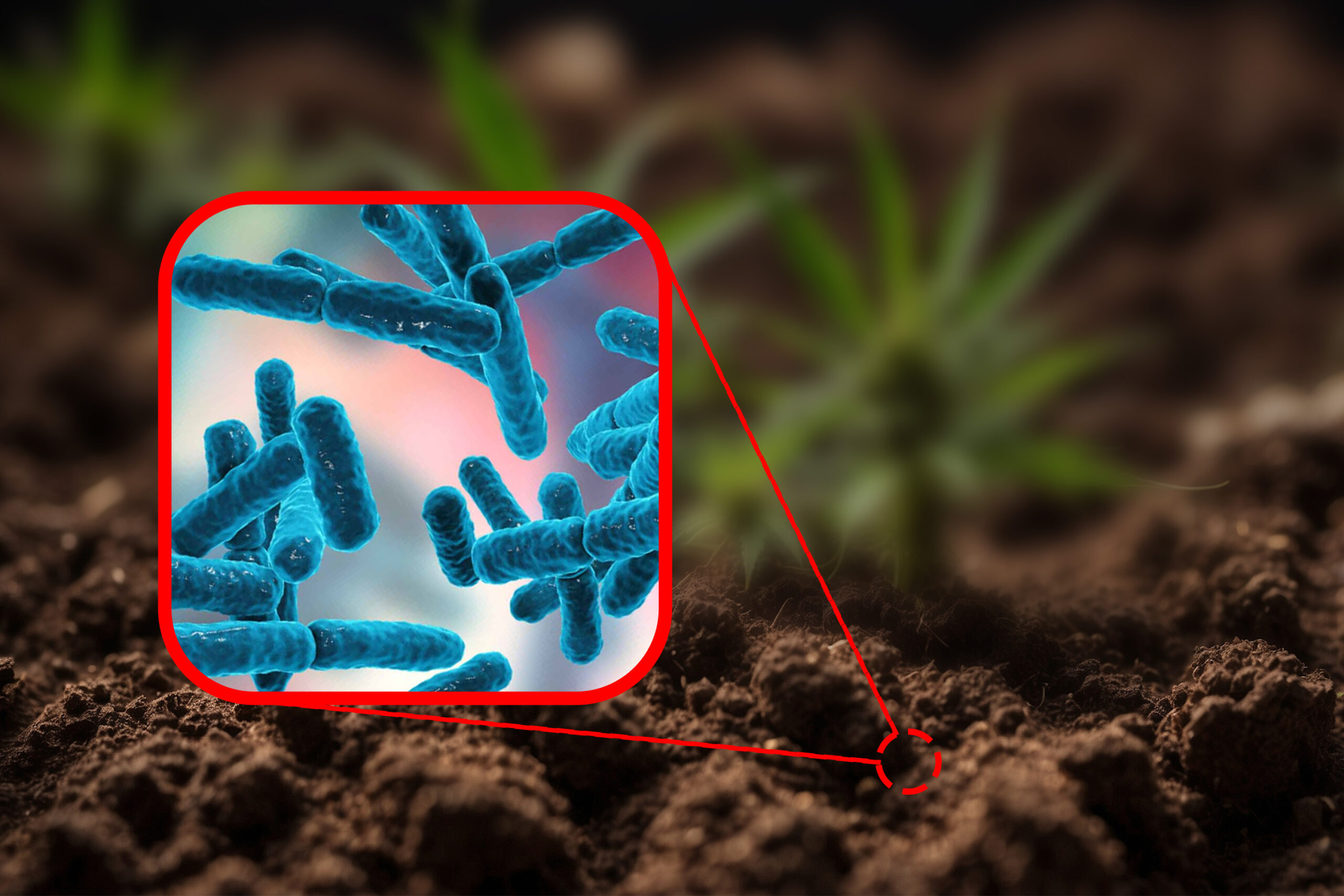
Maintaining the health and well-being of cannabis plants depends much on beneficial microbes such actinomycetes, helpful bacteria, and mycorrhizal fungus. In symbiotic relationships with plant roots, they encourage general plant health, disease resistance, and nutrient absorption. They also break down organic stuff in soil and translate it into nutrients fit for plants.
Still, beneficial bacteria assist to fix nitrogen, break down organic stuff, and fight with diseases-causing pathogens. The availability of these bacteria can boost microbial diversity in the soil, therefore enhancing the general viability and durability of the developing media. Growers apply inoculants or biostimulants including these bacteria to raise soil fertility and enable best nutrient absorption.
Techniques for Nutrient Management
Appropriate management of nutrients requires attention in planning, monitoring, and modification to ensure sure cannabis plants get suitable nutrients at suitable times. Growers must monitor ambient conditions, water quality, and nutrient levels in order to prevent either nutrient toxicity or shortage.
Eating Plans
Effective cannabis growth depends on a feeding plan including nutrients. By means of a consistent nutrition level depending on the plant’s developing phase, producers can maximize plant health and productivity. The feeding schedule should include fertilizer solutions that are especially suited for the plant’s demands at every growth stage, along with adjustments for environmental factors like light intensity, temperature, and humidity.
Most of the producers choose the fortnightly or weekly feeding schedule, which progressively increases or lowers the vegetative phase nutrition content and hence influences blooming. Careful observation of the plant’s response to fertilizers should be undertaken, so the feeding schedule should be changed should any symptoms of nutrient shortage or toxicity occur. Add nutrient flushes to stop nutrients from accumulating in the substrate and maybe compromising the plant’s condition.
Urgent Before Harvest
Before harvesting cannabis plants, flushing is a daily habit especially in cases of synthetic fertilizers. Watering the plants with clean water helps flushing out extra nutrients that might have been stored in the soil. This removes the nutrients’ residuals from the plant tissues, which otherwise might provide negative effects on the taste, scent, and quality of the buds.
Flushing starts two weeks before harvest, thus the plant has enough time to exhaust any nutrients kept in storage. It is crucial to monitor the plant closely for any signs of nutrient deficiencies and address them as needed throughout the process. Flushing also motivates the plant to concentrate on maturation, which increases the quantities of terpenes and cannabinoids, hence producing a stronger end product with greater taste.





